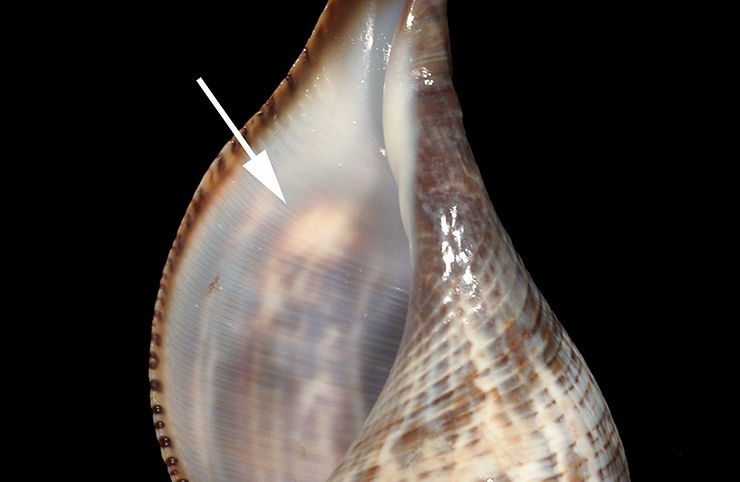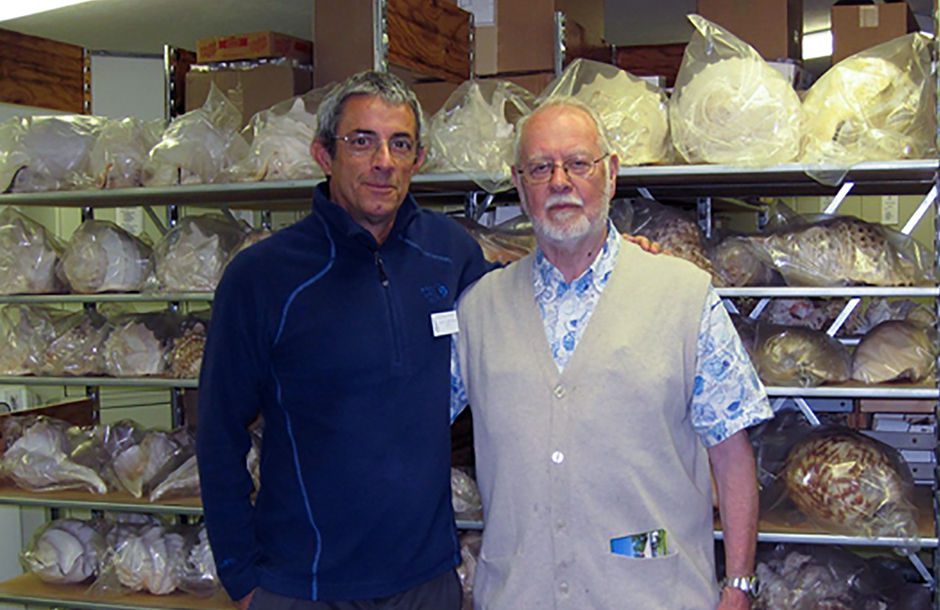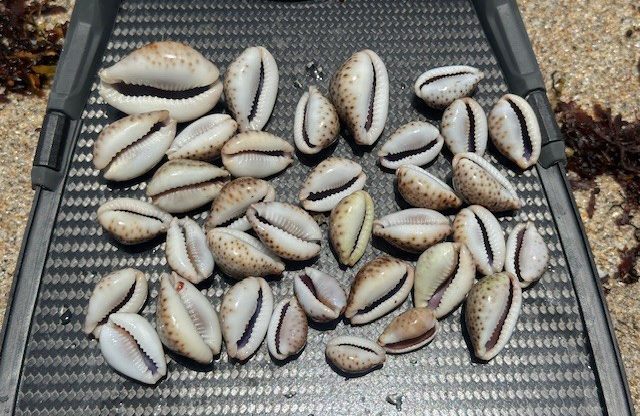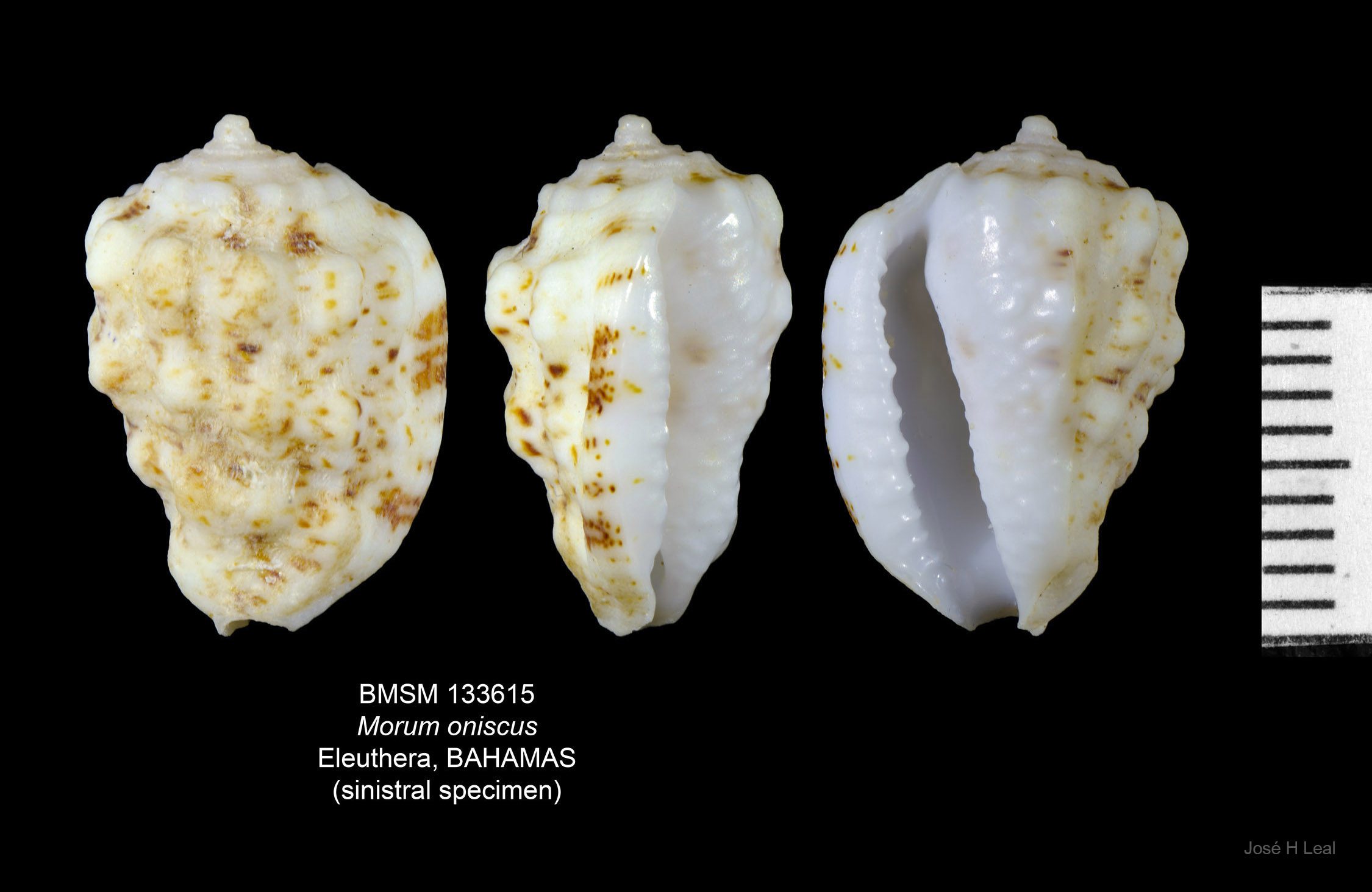In 2015, noted British malacologist, historian of science, and author S. Peter Dance wrote a one-page article in the Pallidula, the magazine of the British Shell Collector’s Club, about a conversation we had many years before. Our exchange was based on an unusual Tulip shell, one on which the obviously unintentional distribution of shell pigments by the snail produced the image of a “man’s face.” Is the face that of Peter Dance himself or Edgar Allan Poe’s? Judge for yourself: enjoy Peter’s article below, and download a PDF copy at the end.
Mystery and Imagination in a Shell
by S. Peter Dance
It was March 2007 and I was making one of my regular visits to Sanibel Island. As usual, the time of my visit coincided with the Sanibel Shell Fair, held annually at that time of year. I was scheduled to give a talk at the Bailey-Matthews Shell Museum and had arranged an early meeting with my good· friend José Leal, then Director of the Shell Museum. As we exchanged greetings, the normally taciturn José seemed to be suppressing some inner excitement. “I’ve got something interesting to show you”, he whispered, “and it’s in my office.” He hurried off. Intrigued, I followed after him.
Hastily opening a package on his desk, José produced from it an average-sized shell of the True Tulip, Fasciolaria tulipa. “This was brought in to me a day or two ago,” he said, “and I think you’ll agree it’s rather unusual.” The True Tulip is one of the commoner shells found at Sanibel, so I said, “What do you mean, unusual? It’s only a Tulip.” Smiling broadly, he said, “I’m going to show a light under it and then you’ll see what’s unusual about it.” He turned on the light and immediately, to my amazement, I could see, revealed in the shell’s aperture, the hazy semblance of a human face! “That’s you!” said José, still smiling. I looked closer. “I don’t think it’s me,” I replied. “Who do you think it is then?” Without hesitation, I said, “Edgar Allan Poe, surely! Look at the moustache and the high forehead.” José looked puzzled, then smiled again before saying, unconvincingly, “I think I see what you mean.”
 Face-in-a-Tulip (arrow). The True Tulip is also known as Fasciolaria tulipa.
Face-in-a-Tulip (arrow). The True Tulip is also known as Fasciolaria tulipa.
I asked José if he would take a photo of the shell, just as it was, under the light. Later that day he supplied an excellent photo. I’m delighted he did so because, as he told me later, its owner had decided to keep the shell and its present location is unknown. Am I right to think the image in its aperture resembles Poe? I’d like to think it does because he is more to me than the author of tales of mystery and imagination, much more than the author of The conchologist’s first book, that slight work being largely borrowed from the works of others. No, for me, it is in his musical and haunting poems that you find his heart and his soul.
So, to Edgar Allan Poe, the lyrical poet, I say, “In your tragically short life you saw, or thought you saw, many strange things. I have seen strange things, too, but none stranger to read than the one I saw in a shell, which became, for me,
“Thine image and–a name–a name!
Two separate–yet most intimate things.
These lines are from his first published poem, Tamerlane. I end my own little tale of mystery and imagination with these lines from another of his poems:
“Is all that we see or seem
But a dream within a dream?”
 José H. Leal and S. Peter Dance at the Museum.
José H. Leal and S. Peter Dance at the Museum.
[For a PDF of the original one-page article click here.]


